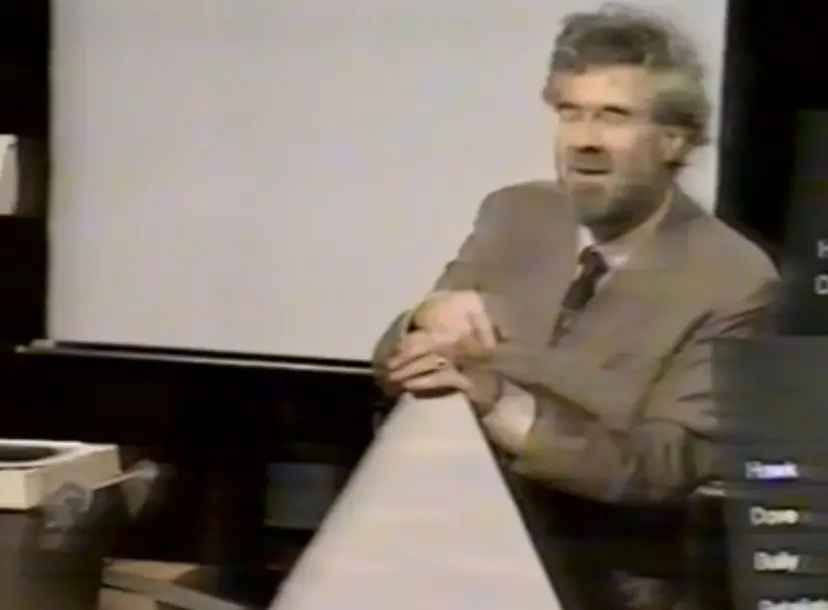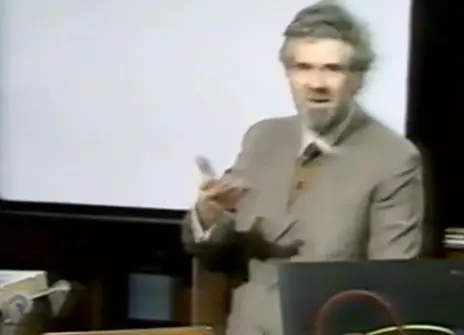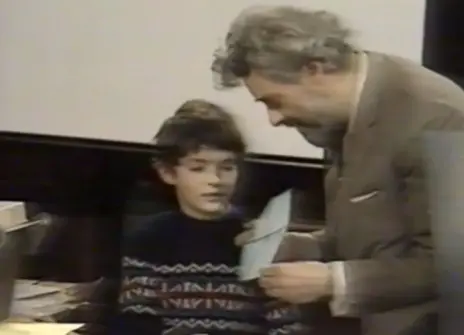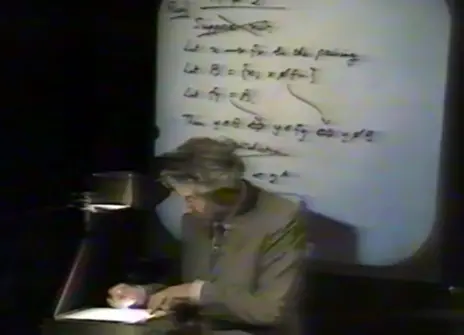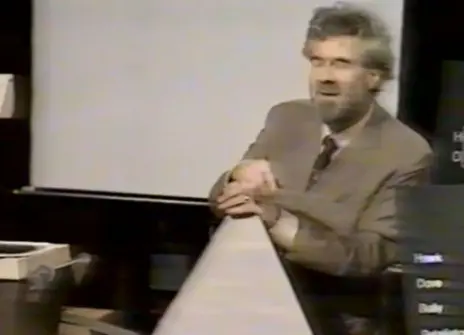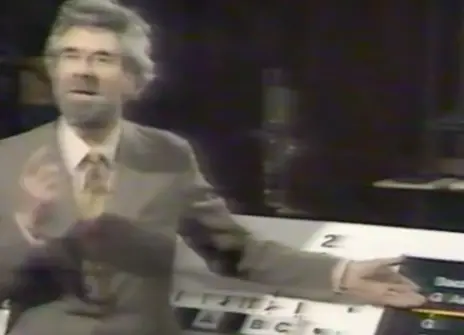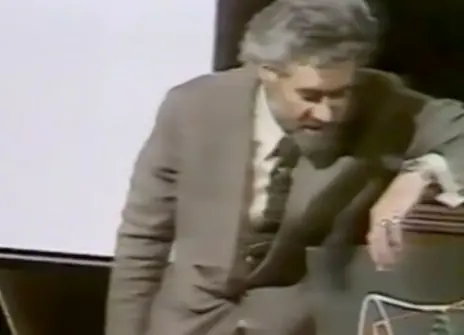Lecture 4 - Games and evolution
In his fourth Christmas Lecture from 1978, Christopher Zeeman moves his focus towards applied mathematics, which is often used to model complex systems like financial markets or population dynamics.
Zeeman looks at the difference between discrete and continuous behaviours and how these affect the complexity of a mathematical model. Although the behaviours of individual items are easy to understand, the probabilities and possible combinations in which they arise can become extremely complicated.
For his young audience, Zeeman demonstrates how Game theory has used mathematics to untangle and even predict the outcomes of complex systems – from helping model evolutionary systems in nature to understanding population dynamics and competition through probability and calculus.
About the 1978 CHRISTMAS LECTURES
Professor Christopher Zeeman presents the 1978 CHRISTMAS LECTURES on one of the oldest and most splendid endeavours of mankind.
As he explains in his original introduction to the series maths is at its core a paradoxical subject: "We are never quite sure whether it is an art or a science, whether we invent it or discover it, whether it is a man-made toy or a truth so universal that it is independent of the universe."
True to the tradition of the CHRISTMAS LECTURES, Zeeman places practical demonstrations at the heart of his presentations, using diagrams and pictures to reveal the nature and beauty of mathematical theorems and illustrating different types of mathematical modelling.
The first three lectures start with a pure point of view to ask 'What is the nature of mathematics?' before shifting to an applied point of view to explore the mathematics of nature.
These were the first CHRISTMAS LECTURES in its then 149-year history to be presented on the subject of mathematics and the series is still lauded as inspiring a new generation of mathematicians. Amongst the live audience was a budding young mathematician called Marcus du Sautoy who went on to present the Lectures in 2006 entitled ‘The num8er my5teries’.
Furthermore, the enthusiasm generated by the series led Professor Zeeman to establish the Ri’s Mathematics Masterclasses programme in 1981. They continue to enable thousands of young people across the UK to participate in the hands-on and inspired learning that is the hallmark of the CHRISTMAS LECTURES.
